Look Out for These 9 Education Design Trends in 2022
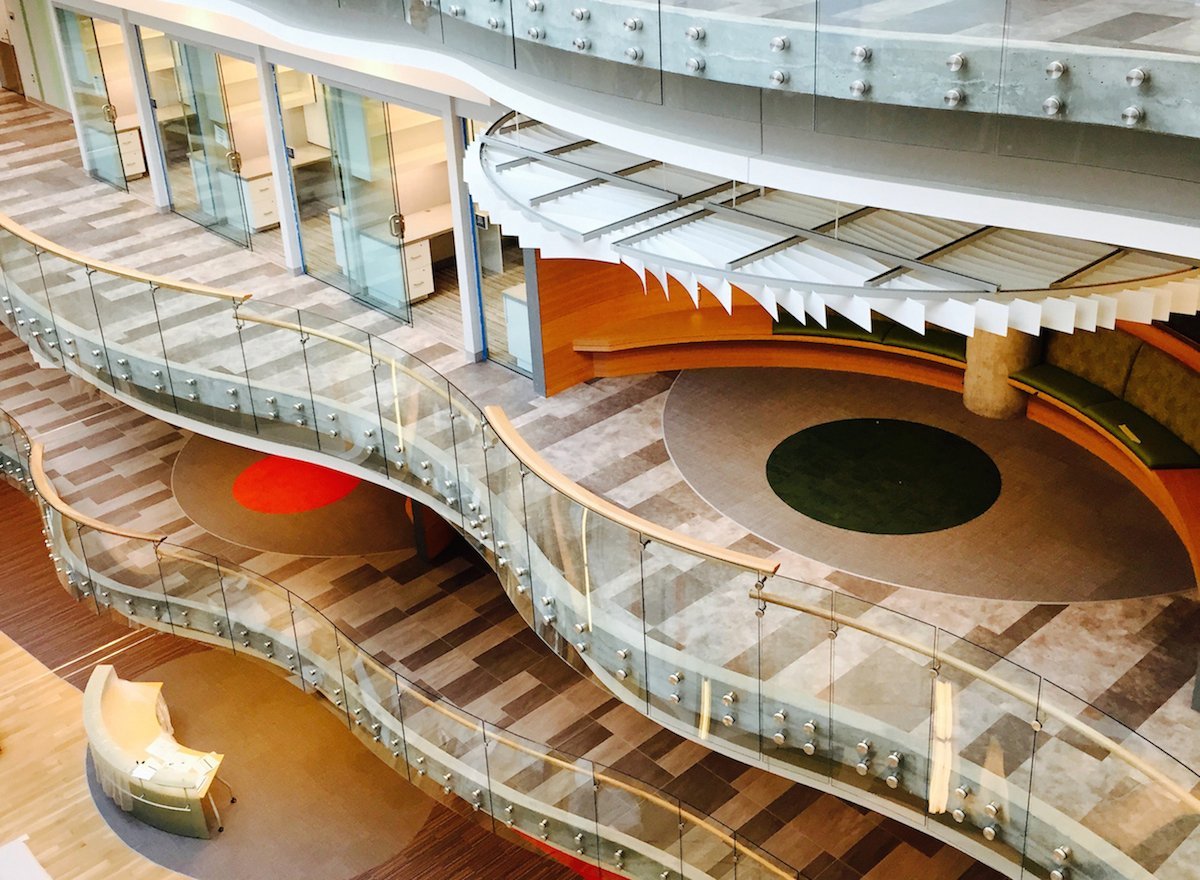
The college experience is a transformative period in many people’s lives — but it’s safe to say that campuses and the overall educational experience look a bit different in 2022 than in previous years. Schools, colleges and universities are contending with the effects of a global pandemic while trying to maintain a sense of safety and school community, and a big part of this includes the physical transformation of educational spaces.
Safety is front and center today. Students, faculty and staff need to feel safe, and know the appropriate precautions are being followed. But the design and aesthetic of academic institutions is as important as ever — the visual and physical experience that an institution fosters is and will always be an integral part of the college experience.
The design of a classroom, cafeteria, dormitory or common space can greatly impact how well a student learns, socializes and finds inspiration. Today, school design trends highlight safety and comfort while still aiming to foster feelings of community and school spirit. Here are some of the top 10 education design trends to watch in 2022.
1. Designing for Safety
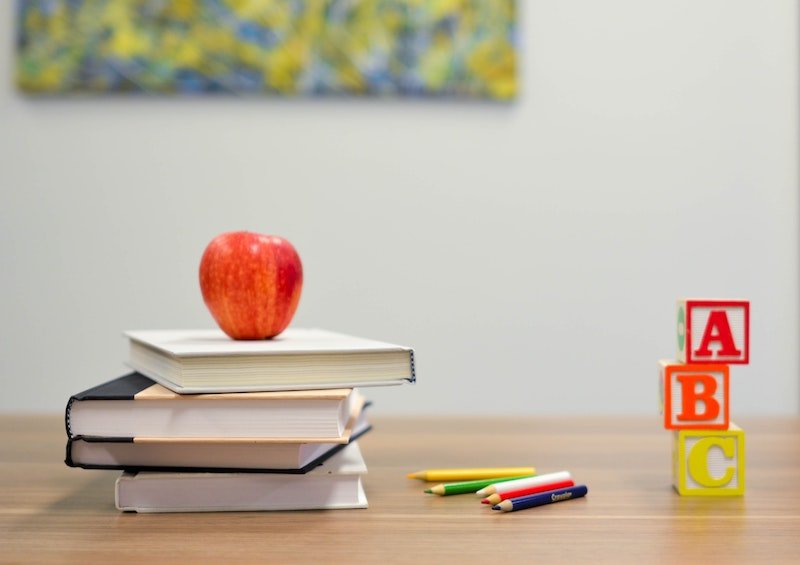
Safety has undoubtedly been the top concern among K-12 schools, colleges and universities for students, faculty and staff who are participating in any sort of in-person learning. According to a survey from the American Council on Education in 2020, safety relating to COVID-19 was the most pressing concern for college and university presidents.
For K-12 schools, child care programs and other types of in-person instruction, the CDC recommends arranging the desks or rectangular tables with all seats facing the same direction and avoiding circular desk arrangements. “For elementary students, teachers can position carpet squares, mats, or other visual cues, such as tape markings and directional arrows, throughout the classroom or area for on-the-floor seating,” according to the CDC.
Educational institutions are reconfiguring classrooms to accommodate fewer students and staff, adding hand sanitizing stations and repurposing community spaces for COVID-19 testing. They are also looking for products and design elements that are easy to clean and maintain. When it comes to school flooring, two great options are LVT and engineered hardwood, safe and durable solutions that are easily sanitized and naturally resistant to most common stains.
2. Reconfiguring Square Footage & Space Planning
This year, schools and classrooms likely look a bit different. Before COVID-19, students could gather in hallways or at someone’s desk before class began. Now, educators have been forced to reconfigure the design and layout throughout their buildings to maximize space while safely accommodating students and abiding by CDC guidelines. This includes spacing out desks, installing room dividers and plexiglass barriers, and adding decals to remind students and staff to socially distance. Schools are now space planning more for the individual experience.
3. Community Spaces on a Smaller Scale
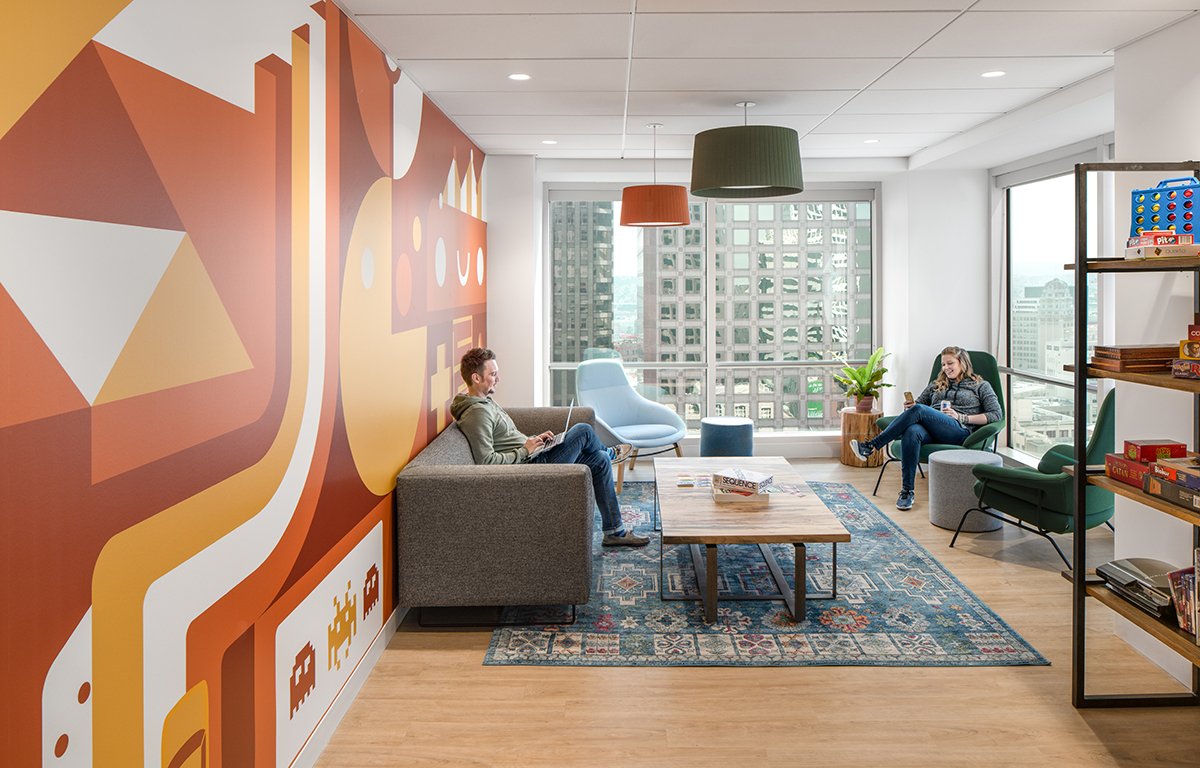
Welcoming communal spaces have been a growing education design trend, but COVID-19 has forced colleges and universities to accommodate smaller numbers while continuing to foster a sense of community. Many are turning to reservation systems in order to keep community spaces open without the safety challenge of large crowds. For example, the Spencer Museum of Art at the University of Kansas requires reservations in order to visit, and anyone wishing to study at one of the Carnegie Mellon University libraries must reserve a seat online.
Many institutions are also taking wayfinding to the next level and incorporating their school colors into signs and informational flyers; Ohio University and Vanderbilt University are just two of the many examples.
4. Safe & Secure Classroom Personalization
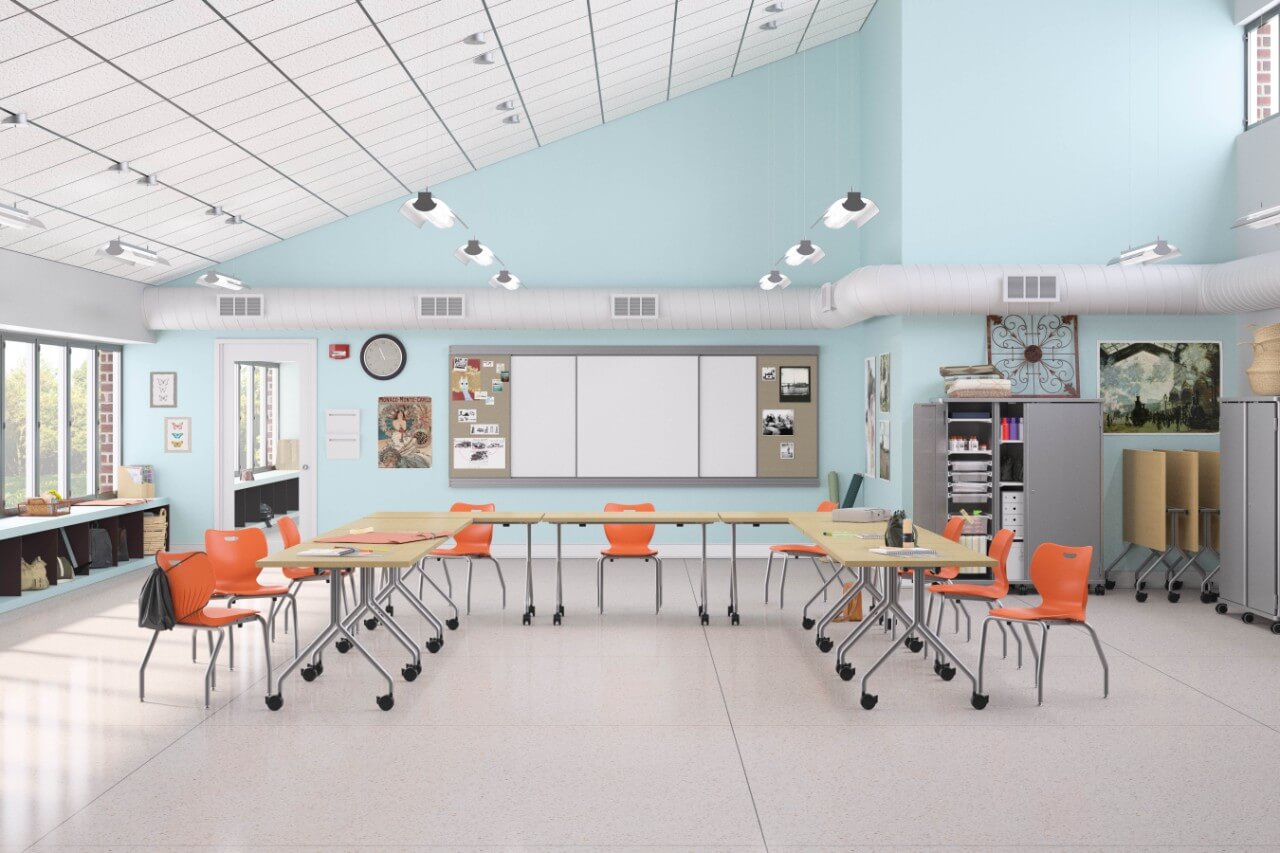
Photo courtesy of The HON Company
The classroom is more than just a classroom; it’s designed so that teachers and professors can make it their own, but they need to do so safely. This includes everything from movable, easy-to-clean furniture and socially distanced seating layouts to portable technology and mobile whiteboards.
Certain flooring solutions, such as engineered hardwood and LVT, can withstand scuffs and marks that may result from moving furniture. Some higher education institutions may opt for individualized learning environments, such as the Nook pod.
Other classroom personalization options include extra power sources and outlets, Wi-Fi connectivity and large monitors to allow for streaming with others remotely.
5. Intentional Use of Color
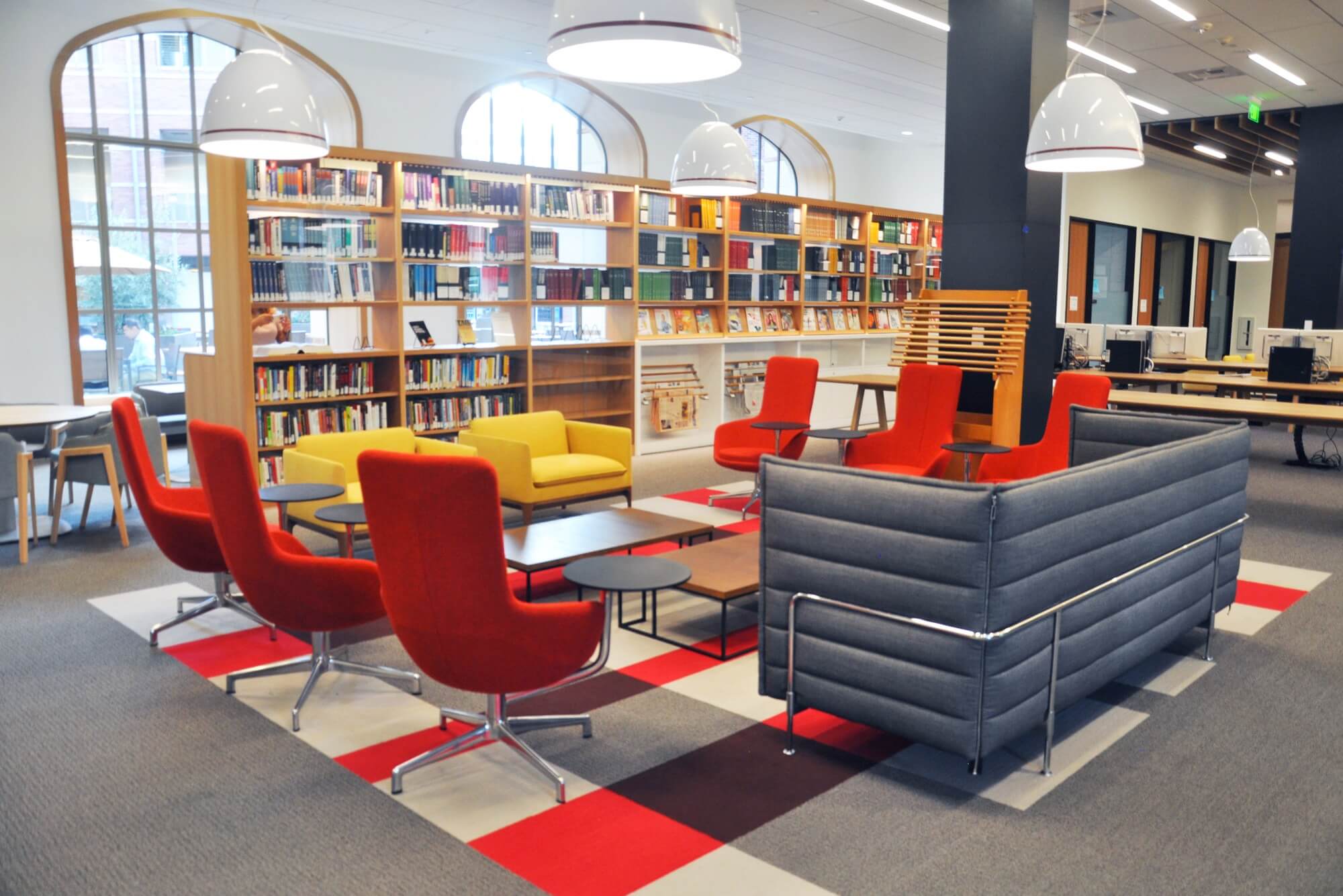
Photo Credit: Pacific Office Interiors
Project Credit: Erica Castillo from Pacific Office Interiors procured these furniture pieces to fit Jan Edson’s (of Jan Edson Design) vision for USC.
Color has always been a great way to brighten up a space. Now K-12 schools, colleges and universities are using color more intentionally for safety guidelines, wayfinding, important announcements and visual social distancing clues, especially in terms of signage.
“Existing off-the-shelf signs can sometimes induce stress,” according to Gensler. “While the messages are important, the color palettes and typography of some signage can make a space feel harsh, dangerous and unwelcoming.”
In addition to incorporating color with safety precautions, designers for educational settings are adding pops of colors to liven up spaces. In one example, colorful murals were added to three therapy rooms as a result of a collaboration between Mount Vernon Nazarene University’s Art and Design Department and the Communications Science and Disorders program in the School of Nursing and Health Sciences.
Color also came into play recently at the University of Pennsylvania when students participated in a design competition for mobile medical testing units. The first-place winner’s design incorporated soft pastels to provide comfort to patients.
When it comes to K-12 schools, color is certainly a factor. Colors and shades of blue, green and purple tend to be calming, whereas reds, yellows, and oranges generate feelings of energy, according to Spectrum Industries, Inc., which creates niche furnishings for the classroom. “An overabundance of color, or colors that are too bright can become distracting,” according to the company. “Bright and primary colors can be used for classrooms with younger children, but cooler colors are best for high school aged students.”
In the future, schools may also use color-coded furniture to indicate to students, faculty, staff and visitors where they can and can’t sit within a classroom. For example, a room could have a collection of blue, green and red chairs, but limit attendees to sitting in chairs of a particular color. This could even be incorporated into a math lesson for some elementary schools.
Colleges and universities have always featured wayfinding, but now signs include colorful information about face covering protocols, social distancing guidelines and proper hygiene practices. K-12 schools are also including these types of wayfinding features in their buildings, including directional floor decals indicating one-way foot traffic. Some companies are even offering signs and graphics featuring colorful cartoons and fun animal footprints that are especially designed for younger students.
6. More Personalized Private Environments
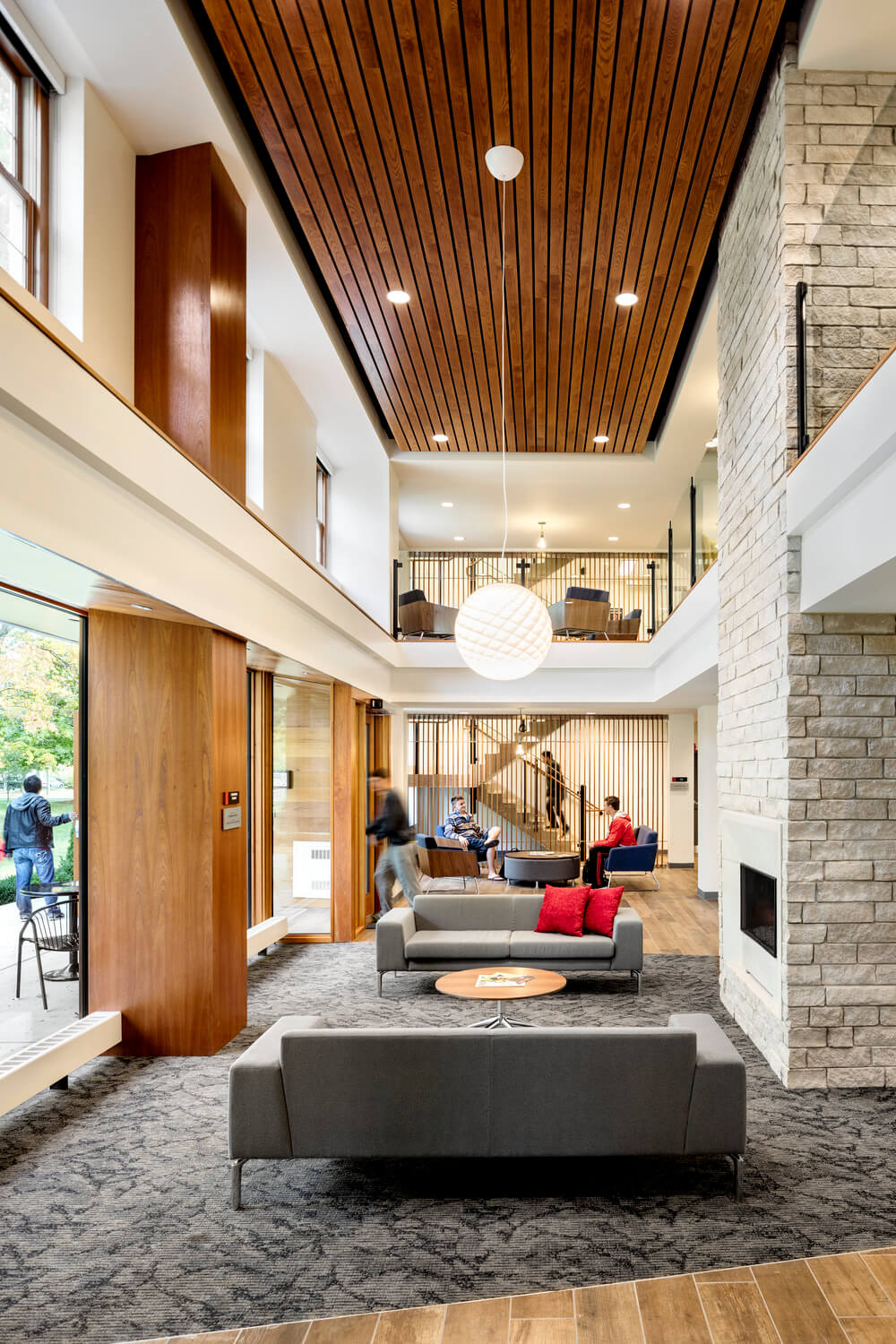
©Jeremy Bittermann
To create an efficient and more comfortable environment — and to attract prospective students — more institutions of higher learning are infusing personalized private convenience into buildings and educational facilities. This is especially important in 2022 as educational facilities limit the amount of people congregating in larger spaces.
For example, West Virginia University features small fitness centers in three of its dorms, which means students can work out in their residential building instead of using the more populated campus-wide fitness facilities.
Other colleges and universities feature coffee shops or fast-food markets in educational buildings, which means students don’t have to visit the large dining halls. At Vanderbilt University, students use a meal swipe to receive a basket of fresh fruits and vegetables and pantry staples like pasta and beans. The university has also constructed temporary popup locations for meal pickup to “de-densify” campus dining crowds.
7. Acoustics
Another popular school design trend? Acoustics. Decorative flooring and wall treatments can evoke feelings of safety and comfort and add much-needed visual interest to a space while also providing an important acoustic solution. For example, Parterre’s 5mm Loose Lay and QuickTrack flooring products are thicker and have a higher acoustic rating. Flooring choice impacts not only the look and feel of a room, but also the noise level. Here are some solutions to fixing poor acoustics in educational buildings, courtesy of Kirei:
- Area rugs or curtains
- Sound masking
- Ceiling treatments
- Flexible wall partitions
In addition, acoustic flooring solutions that are specially designed to reduce noise come in many types, sizes and colors. Two of the most popular choices are engineered hardwood and LVT, whose material and design options are naturally sound absorbing.
8. The Comfort of Home
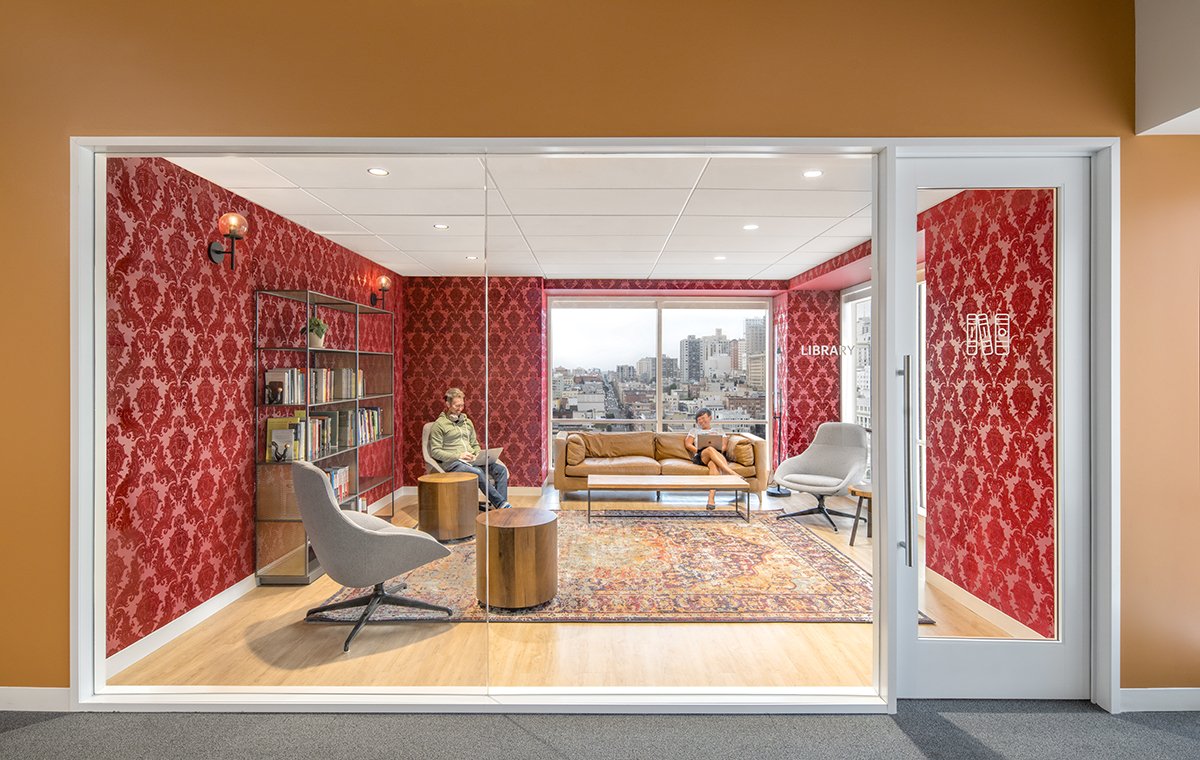
Comfortable, home-like design is a trend seen across nearly all industries, and education is no exception. Students are more likely to feel motivated and learn successfully when they are surrounded by functional and beautiful designs that inspire — and make them feel safe and comfortable. Choosing warm and inviting design elements for both the classroom and student housing can have a positive impact. Now more than ever, students need to feel safe in a setting that feels more homelike, which can often result in positive learning outcomes.
“Dorms really require what I would argue is a blend of a residential focus with a hospitality level durability and reproducible design,” said Jenifer Halverson, Studio Director at Pacific Office Interiors. “School buildings involve learning, creative and administrative spaces where we would want to emphasize a comfortable, inviting atmosphere.”
A simple way to create that homelike atmosphere is with wood or wood-look flooring. Any flooring solution in an education spaces need to be durable, easy to maintain and easy to clean, and engineered hardwood and LVT both fit the bill. These durable, versatile materials offer a comforting, natural aesthetic and classic beauty.
9. Keeping It Green
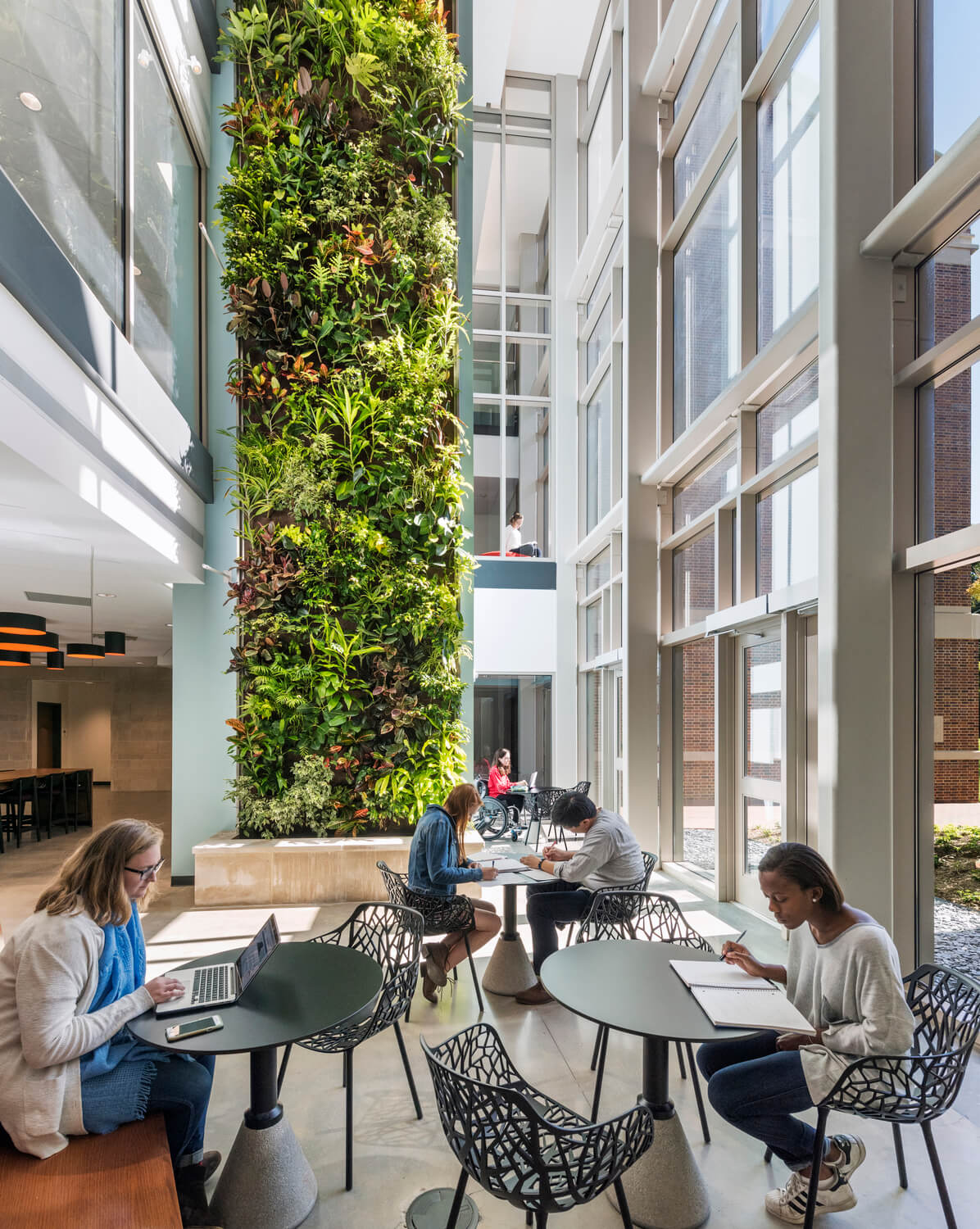
©Anton Grassl/Esto
Many schools are very concerned about the environment, so it makes sense that greenery and sustainability are top design concerns. Plus, schools are embracing the fact that you’re never too young to learn about sustainability and keeping it green.
Plants and “living walls” can improve air quality, and are proven to reduce in-air toxins and improve productivity. Another way to add more living elements to the school environment is to build outdoor spaces for students to use. Indoor/outdoor functional spaces allow you to bring the outdoors in, incorporate plants and give students yet another thoughtfully designed space to utilize. When it comes to sustainable cleaning and sanitizing practices, many schools are opting for eco-friendly products.
Not only are natural design elements calming and appealing, but many schools and students today are avid advocates of the environment. They want to make a positive impact on the planet, and that can begin while they are in school. Consider the sustainable features of furnishings and finishes or select environmentally friendly products that contribute to LEED and WELL building standards, and make efforts to be energy efficient. Parterre’s LVT and engineered hardwood products, for example, may be eligible for LEED and WELL credits.
“As environments of critical thinking and rich research, higher education institutions have long been leaders in the movement toward sustainable, healthy facilities,” said Lisa Schmidt, of National Office Furniture.
—
If you’re getting ready to design or renovate a new college or university space and you’re looking for a safe, durable solution, we invite you to explore our beautiful and practical school flooring options. We have experts with years of experience who are ready to help you find the best product for your space.
Roche FitzGerald
Roche FitzGerald, Lead Product Designer for Parterre, is a second-generation artisitc giant in the flooring industry developing an appreciation for art and physical composition from his father, who was also an artist and leader in surface design.
“The mindset I have when creating art is that accidents are beautiful, which is something my father instilled in me,” said Roche. “There is an allure to discovering organic textures, patterns, and colors.”
A true artist at heart, Roche shapes designs from his own paintings or the inspirations of daily life. In the early 2000s, while other companies were turning to their manufacturers for options, Roche led the way in producing original flooring designs earning multiple industry awards and recognition for his luxury vinyl designs.
Polished Concrete vs. Vinyl Flooring
Polished Concrete vs. Vinyl Flooring Polished concrete vs. vinyl flooring. It’s not an easy decision, considering both provide an excellent solution for commercial flooring. The look of concrete floors has been a growing trend for commercial interiors.
Chevron and Herringbone
Break the Pattern of Commercial Flooring You can add more flair to your commercial flooring by breaking from the look of traditional straight-line, square, and diagonal patterns. Eye-catching looks like chevron and herringbone will dot the designer landscape in 2024.